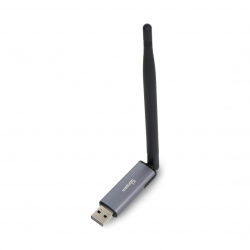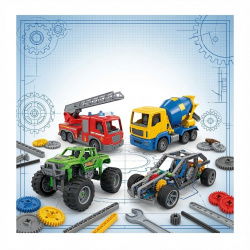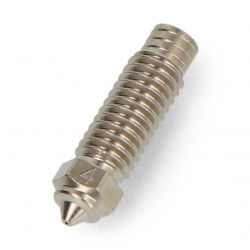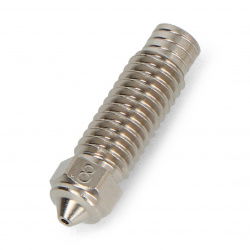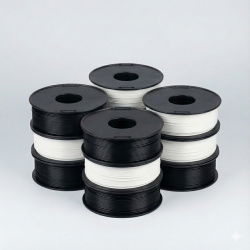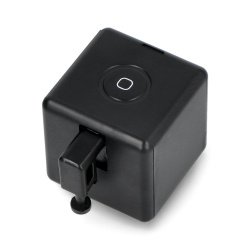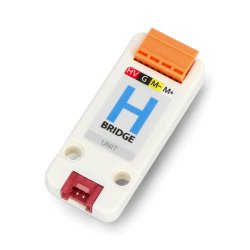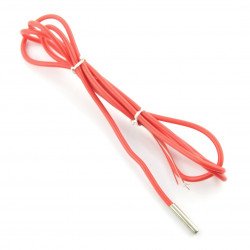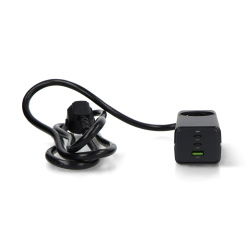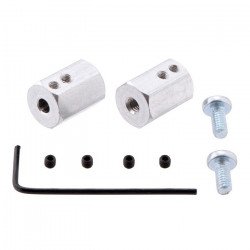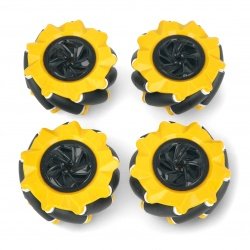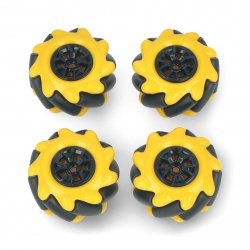Wheeled propulsion is still the most popular and simplest way to move land-based mobile platforms. In the case of robots - whether amateur or fully professional - just two independent wheels will make it possible for the vehicle to move forward and backward, turn at any radius, and also rotate in place. However, this is still not all that can be expected from a wheeled robot. Interestingly, it only needs to include three motors and special 'Omni Wheel' type 'omni-directional' wheels to give the structure unlimited movement.
Omni Wheels
Hexagonal Wheel Adapter - 12mm/4mm - 2pcs. - Pololu 2684
Aluminum adapter converting the 12 mm, hexagonal shaft suitable for different wheels, for 3 mm motor's shaft. The length of the adapter is equal to 17 mm.Set of Mecanum wheels - 80mm - 4pieces - black/yellow with castors - DFRobot FIT0654-1
Mecanum multidirectional wheels with a diameter of 80 mm , which allow vehicles to move in any direction - straight, diagonal, horizontal, slalom on the letter S. They also...Set of Mecanum wheels - 48 mm - 4 pieces - black/yellow with rollers - DFRobot FIT0662-1
Multidirectional Mecanum wheels from DFRobot included - 4 pieces with a diameter of 48 mm . Thanks to them, vehicles can move in any direction - it is possible to drive...See also
Omni Wheel, that is... the wheel in the wheel
In essence, the Omni Wheel is nothing more than a main wheel with a series of rollers or smaller wheels around its circumference, mounted on separate axles at appropriate angles. As improbable as it sounds, it is precisely this arrangement that allows the structure to roll (and, above all, drive) in any direction. While a normal wheel (in non-slip conditions) rolls only perpendicularly to its own axis, the Omni Wheel and Mecanum wheels like it can also move, for example, sideways (parallel to its own axis) and at any other angle. These additional movements are the responsibility of the already mentioned miniature rollers, which in a way take on the "non-standard" components of the speed vector, adjusting their rotation to the current needs.
Controlling Omni Wheels
The basic assumption in the control of all robots equipped with Omni Wheels is the following: the resultant velocity vector of the robot is the result of a combination of appropriately selected velocities of all wheels. To calculate specific values it is necessary to know the geometry of the robot, i.e. the number and mutual positioning of the Omni Wheel wheels. On the Internet one can find mathematical descriptions of the control of such robots (the so-called mathematical models), whose level of complexity depends on the adopted modelling method and the complexity of the given construction. Although a full understanding of the model (which makes intensive use of trigonometry and matrix algebra) is necessary to be able to implement a control algorithm in any direction in your own program, for simple movements it is sufficient to know which drive and in which direction to turn in a given situation - which can be easily determined even by graphical methods.
Omni Wheels at Botland store
We offer a wide range of Omni Wheels, ideal for use in small mobile robots that move on a table or smooth floor. The simplest of these wheels - the OW001 and OW002 - have an outer diameter of 41 and 51 mm respectively, and a mounting hole of 14 mm (with reduction insert - 10 mm). If you want a smoother motion, choose the OW003 wheels with optimally shaped guide rollers. All other Omni Wheel multi-purpose wheels available in this category are equipped with two rows of alternating rollers. These smooth out the movement of the platform even more precisely and provide perfect support, regardless of the current rotation angle of the wheel.






























































































































































































































































































































